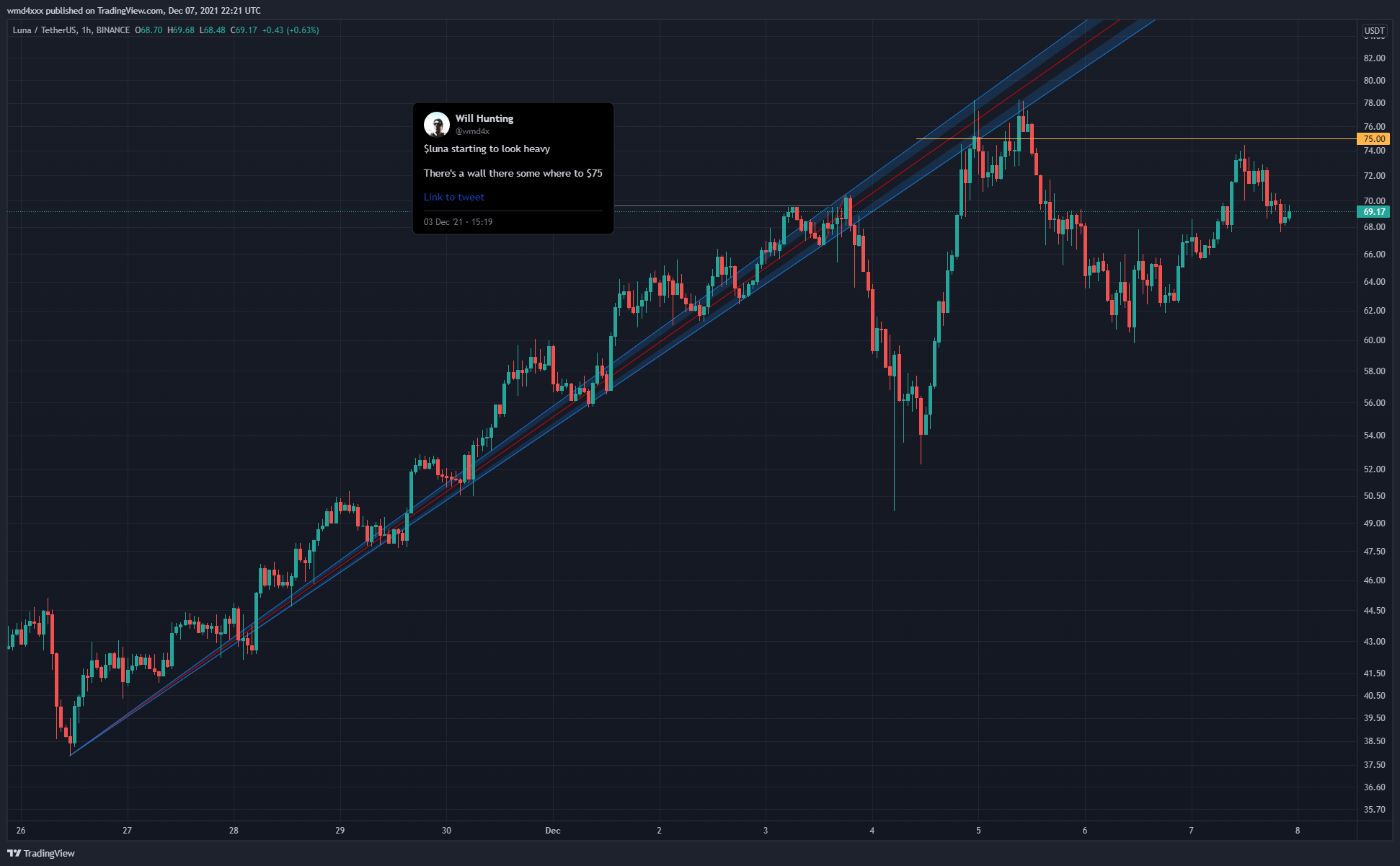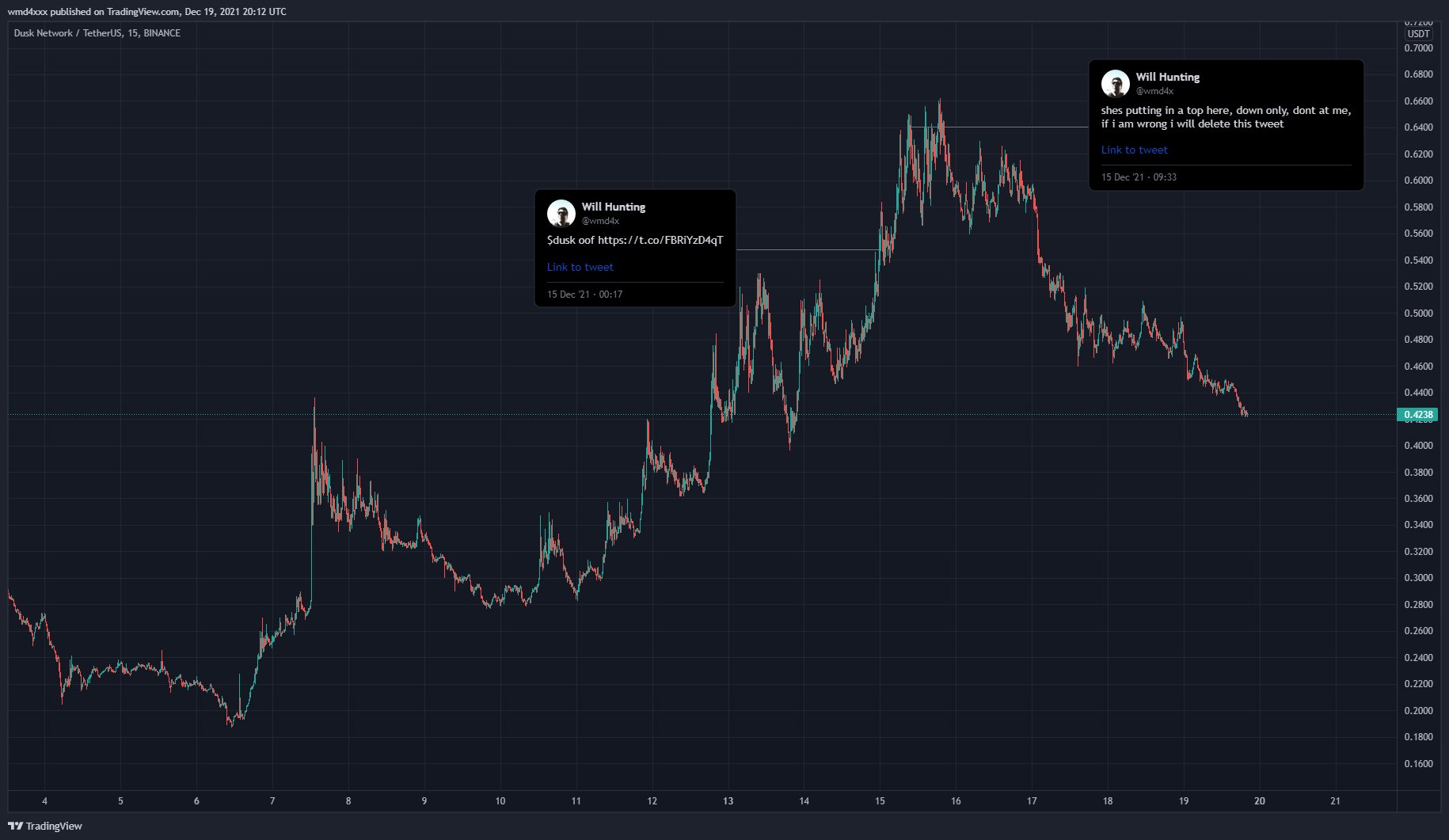1. See the obvious… do the obvious
I commented on what I thought was an inverse head and shoulders forming on my chart. My colleague said ‘Go stand on the other side of the room and look at your screen, if its still looks like an inverse head and shoulders then it probably is. If you have to squint your eyes to see it, then it isn’t there.’
2. Establish bias… execute with extreme prejudice
You either have it or you don’t. What I know is its damned difficult to pull a trigger without it. Often it’s as straight forward as drawing a line. It doesn’t matter where you do it but the most natural point is the opening price of the instrument.
Up or down on the year:
Up or down on the week:
Up or down on the day/session:
3. Embrace risk
Embracing risk doesn’t mean being a crazy ass donkey with your equity. It means you know what you’re putting on the line and where. It’s like PTJ said ‘the difference between a successful trader and a loser is that the successful trader knows how much he is risking in the trade’. Ok. They might not be his exact words, but I’m sure it’s what I wanted to hear when he said it.
4. Get a solid entry
A good entry is the difference between heart burn and heart attack. It’s about placing a trade at a time and price point where the outcomes are limited; where shades of grey become black and white; where determining right and wrong is immediately apparent and no longer discretionary or arbitrary.
Bottom line, if you have to rely on money management techniques to earn a buck, your system sucks. Foreign exchange and equity markets are not the same.
5. Define Technical Analysis: If it happened before it will happen again.
It is rational and empirical. It’s about having positive expectation. Rely on your experience. Trading market behaviour is about knowing what’s going to happen next because it happened before.
6. Grow up
Be prepared to take responsibility for your decisions. Don’t chuck the dummy out when it doesn’t work out. Find out why. There’s always a reason and for every rule there’s an exception. Knowing that is what separates the great from the good.
7. Think continuation
If it’s going up it can go a lot higher. If it’s going down it can go a lot lower. When it comes to price you have to choose to fight or follow. Followers have an easier ride.
8. Time reversals.
That doesn’t mean don’t fight. It means pick your battles wisely. Every trending wave started off as a counter trend trade.
9. Targets
If it’s moving away from somewhere then it’s moving toward something. No target no trade.
10. Zoom Out!
If you want to see the big picture, zoom out.
11. Understanding how price moves will keep you on the right side of it
Price moves Vertically then Diagonally or Horizontally, after which you can expect a Continuation or Reversal.
- Vertical moves define trend.
- Diagonal moves continue with the momentum.
- Horizontal moves consolidate the conquest.
12. Understand support and resistance, know what it looks like on a screen
As price moves it will hit a ceiling (resistance) or a floor (support) which takes time to penetrate. At these levels you will see on your charts turning points in the price. When the price penetrates these levels we have a breakout.

Whichever time frame you are viewing this breakout on, is the same time frame on which you will see the parabola. This is, if you are looking at the 15 minute time frame, you must look for the parabola on the same time frame, or higher. This formation is something that will take place over several candles.



If price is falling then ask where is resistance and trade that level.
Define your risk, pull the trigger.
13. Trend Lines
Nothing defines a trend like a trend line. The clue is in the name.

Look for momentum in the break. Trade the retest.
14. Channels
The best channels are the ones that look nice. They have good symmetry. The longer a channel has been established, the more significant it is. The trend is the direction of the channel.
Up channels tend to break down:



15. The Pull-Back Channel
- Price moves with extreme momentum (vertical move)
- Price channels back to the origin of the move.
- Price drops to continue with momentum of original move.
Here’s what it looks like on screen:
16. Trading Clusters
Price movement consists of two fundamental structures.
- There are periods of consolidation where price moves in a confined range which are typically represented by a number of candles clustered together;
- And there are periods of breakout where price moves from one level to another typically with wide ranging candles demonstrating momentum.
P-Type
In the first instance price moves like this.
The pattern is (Boost – Consolidate – Boost).
- Wait for the break out to complete.
- Wait for price to enter in to consolidation.
- Take a trade during the consolidation in the direction of the previous boost.
X-Type
In the second instance price moves like this.
The pattern is (Boost – Consolidate – Boost – Pull Back).
- Wait for the pullback to reach area of last consolidation.
- Trade in the direction of the last boost.
C-Type
In the third instance price moves like this. Not for the novice trader.
The pattern is (Boost – Consolidate – Boost – Consolidate).
You have 3 possible outcomes, 1 of which leads to reversal and the other 2 continuation.
- Red: Buy the rebound when price reaches first area of consolidation.
- Green: Buy a break out from the last consolidation.
- Purple: Leave it alone unless your already in a trade.





















